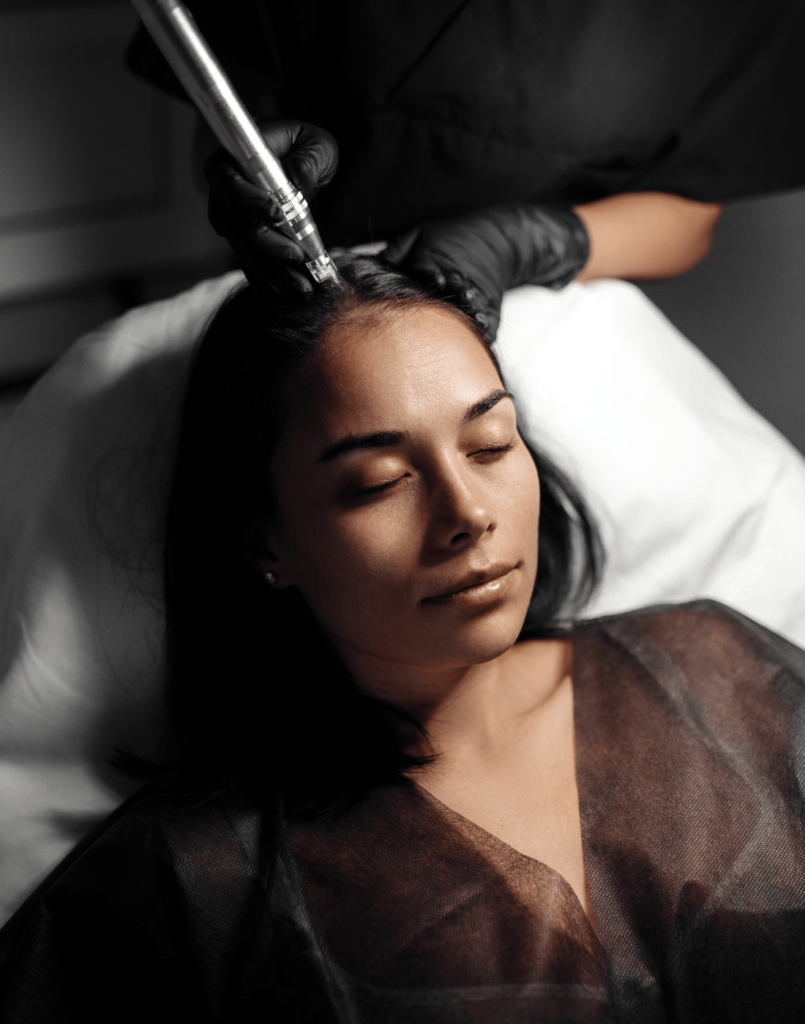DHI Hair Transplantation (Direct Hair Implantation) is an advanced technique in hair restoration. It’s a modified form of the FUE (Follicular Unit Extraction) method, and it’s known for being minimally invasive with more precise results.

Hair Extraction:
No Need to Create Recipient Sites First:
Direct Implantation:
A Choi Implanter Pen is used to directly implant the extracted follicles into the scalp.
The pen creates the incision and inserts the hair simultaneously, allowing for better control of the angle, depth, and direction.
Since DHI uses fine, specialized tools for follicle extraction and implantation, it doesn’t leave noticeable linear scars.
This is ideal for people who prefer short hairstyles, as the donor area heals with almost invisible marks.
The procedure is minimally invasive and doesn’t require stitches, which significantly reduces downtime.
Most patients can return to work and regular activities within a few days.
The use of the Choi Implanter Pen allows surgeons to control the depth, direction, and angle of each implanted follicle.
This level of precision helps mimic the natural hair growth pattern, resulting in a more authentic and seamless appearance.
There are no major cuts or incisions involved, reducing the risk of bleeding, infection, or complications.
Local anesthesia is used, making the process virtually painless.
For many patients—especially women or those with smaller areas of hair loss—the procedure can be done without shaving the entire scalp.
This helps maintain discretion and boosts confidence during recovery.
Because the grafts are implanted immediately after extraction, the time they spend outside the body is reduced.
This minimizes the risk of damage and increases the survival rate, leading to denser and longer-lasting results.
Surgeons can strategically plan and customize the implantation based on the unique needs of the patient, including hairline design, density, and symmetry.
The simultaneous incision-and-implantation method used in DHI causes less trauma to the recipient area compared to traditional methods, promoting quicker healing and better outcomes.
The number of grafts depends on the extent of your hair loss, the desired density, and the size of the area to be treated. A typical session may involve 2,000–4,000 grafts. Your surgeon will assess and recommend a custom plan during your consultation.
Yes, DHI is an excellent option for women experiencing hair thinning, receding hairlines, or patchy hair loss. It’s discreet, and in many cases, full head shaving is not required, making it especially appealing for female patients.
DHI offers one of the highest graft survival and success rates, typically around 90–95%, thanks to the direct implantation technique and minimal time grafts spend outside the body.
Absolutely. DHI is versatile and can be used for facial hair restoration, including beard, mustache, and eyebrows, with high precision and natural results.
Most patients can return to work within 2–5 days after the procedure. There might be some redness or mild swelling, but this subsides quickly.
DHI is generally very safe. However, minor side effects like redness, swelling, itching, or temporary shock loss can occur. These are usually mild and temporary. Serious complications are extremely rare when performed by a skilled medical team.
Majesty ’de, her danışanımızın ihtiyaçlarını ve beklentilerini titizlikle analiz ediyor; en yüksek kalite standartlarında, kişiye özel ve etkili bir tedavi süreci planlıyoruz.
Majesty’ı farklı kılan en önemli şey, size en doğru kararı verebilmeniz için ihtiyaç duyduğunuz bilgileri açık ve anlaşılır şekilde sunmamızdır.
© 2025 MAJESTY ESTHETIC | Tüm Hakları Saklıdır | Site Haritası | Gizlilik Politikası | Erişilebilirlik
Erişilebilirlik: Görme engeliniz veya başka bir engeliniz varsa ve bu web sitesini kullanırken ihtiyaç duyabileceğiniz erişim düzenlemeleriyle ilgili bizimle görüşmek isterseniz, lütfen +90 542 134 34 41 numaralı telefondan kliniğimizle iletişime geçin.